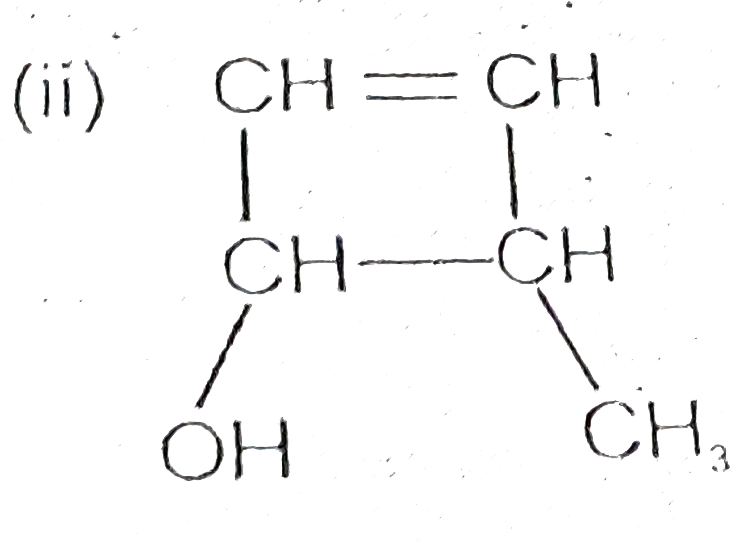Viscosity of a liquid arises due to strong intermolecular forces existing between the molecules. Stronger the intermolecular forces, greater is the viscosity. Name the intermolecular forces existing in the following liquids and arrange them in the increasing order of their viscosities. Also give reason for the assigned order in one line.
water, hexane (CH3CH2CH2CH2CH2CH3), glycernine (CH2OHCH(OH)CH2OH)
To solve the question regarding the viscosity of the given liquids (water, hexane, and glycerin), we will follow these steps:
Step 1: Identify the Intermolecular Forces
- Water (H₂O): Water molecules exhibit strong hydrogen bonding due to the presence of highly electronegative oxygen atoms bonded to hydrogen.
- Hexane (C₆H₁₄): Hexane is a non-polar molecule, and the primary intermolecular forces present are London dispersion forces, which are relatively weak.
- Glycerin (C₃H₈O₃): Glycerin contains three hydroxyl (OH) groups, which enable it to form strong hydrogen bonds, similar to water but with more potential bonding sites.
Step 2: Arranging the Liquids in Increasing Order of Viscosity
Based on the strength of intermolecular forces:
1. Hexane (weak London dispersion forces)
2. Water (strong hydrogen bonds)
3. Glycerin (stronger hydrogen bonds due to three OH groups)
Thus, the increasing order of viscosity is:
Hexane < Water < Glycerin
Step 3: Provide Reason for the Assigned Order
The viscosity is directly related to the strength of intermolecular forces; therefore, glycerin has the highest viscosity due to the presence of multiple hydrogen bonds, followed by water, and hexane has the lowest viscosity due to weak dispersion forces.
Summary of the Solution
- Intermolecular Forces:
- Water: Hydrogen bonds
- Hexane: London dispersion forces
- Glycerin: Hydrogen bonds
- Increasing Order of Viscosity: Hexane < Water < Glycerin
- Reason: Viscosity increases with the strength of intermolecular forces; glycerin has the strongest due to multiple hydrogen bonds.
- Water (H₂O): Water molecules exhibit strong hydrogen bonding due to the presence of highly electronegative oxygen atoms bonded to hydrogen.
- Hexane (C₆H₁₄): Hexane is a non-polar molecule, and the primary intermolecular forces present are London dispersion forces, which are relatively weak.
- Glycerin (C₃H₈O₃): Glycerin contains three hydroxyl (OH) groups, which enable it to form strong hydrogen bonds, similar to water but with more potential bonding sites.
Based on the strength of intermolecular forces:
1. Hexane (weak London dispersion forces)
2. Water (strong hydrogen bonds)
3. Glycerin (stronger hydrogen bonds due to three OH groups)
Hexane < Water < Glycerin
The viscosity is directly related to the strength of intermolecular forces; therefore, glycerin has the highest viscosity due to the presence of multiple hydrogen bonds, followed by water, and hexane has the lowest viscosity due to weak dispersion forces.
- Intermolecular Forces:
- Water: Hydrogen bonds
- Hexane: London dispersion forces
- Glycerin: Hydrogen bonds
- Increasing Order of Viscosity: Hexane < Water < Glycerin
- Reason: Viscosity increases with the strength of intermolecular forces; glycerin has the strongest due to multiple hydrogen bonds.
Topper's Solved these Questions
- STATES OF MATTERBOOK - NCERT EXEMPLAR ENGLISHCHAPTER - STATES OF MATTEREXERCISE - Matching The Columns
3 Videos
- STATES OF MATTERBOOK - NCERT EXEMPLAR ENGLISHCHAPTER - STATES OF MATTEREXERCISE - Assertion and Reason
6 Videos
- STATES OF MATTERBOOK - NCERT EXEMPLAR ENGLISHCHAPTER - STATES OF MATTEREXERCISE - MCQ More Than One Option
4 Videos
- SOME BASIC CONCEPTS OF CHEMISTRYBOOK - NCERT EXEMPLAR ENGLISHCHAPTER - SOME BASIC CONCEPTS OF CHEMISTRYEXERCISE - All Questions
45 Videos
- STRUCTURE OF ATOMBOOK - NCERT EXEMPLAR ENGLISHCHAPTER - STRUCTURE OF ATOMEXERCISE - All Questions
55 Videos
Similar Questions
Write its bond line formula
(i) CH3CH(OH)CH2CH2OH
View SolutionGive IUPAC name of : OH−CH3−CH2−CH2−CHO
View SolutionArraange the following compounds in increasing order of dipole moment?
CH3CH2CH3.CH3CH2NH2,CH3CH2OH
View SolutionGive IUPAC name for each of the following
CH3CH−CH2CH2CHCH2CH3 | | NH2 OH
View SolutionGive IUPAC name for each of the following
CH3CH(OH)CH2CH2COOH
View SolutionGive IUPAC name for each of the following
CH2OHCH2CH2CH2OH
View SolutionArrange the following compounds in the increasing order of their boiling points:
CH3CH2CH2CHO,CH3CH2CH2CH2OH,H5C2−O−C2H5,CH3CH2CH2CH3
View SolutionArrange the following compounds in increasing order of their boiling points.
CH3CHO,CH3CH2OH,CH3OCH3,CH3CH2CH3
View SolutionArrange the compounds in order of decreasing acidity:
(1) Cl−CH2−CH2−OH
(2) Cl2CH−CH2−OH
(3) I−CH2−CH2−OH
(4) CH3−CH2−OH
View SolutionDipole moment of CH3CH2CH3(I),CH3CH2OH(II) and CH3CH2F(III) is in order
View Solution
